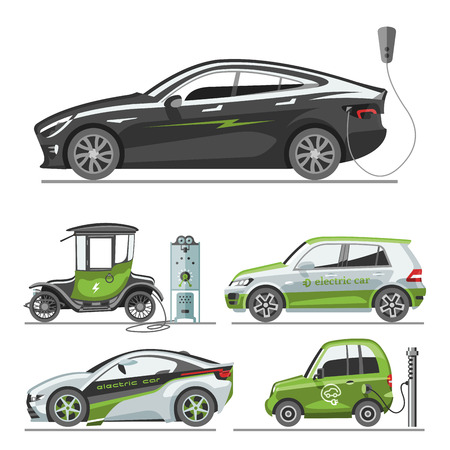1. Introduction to Electric and Hybrid Vehicles
Over the past decade, electric vehicles (EVs) and hybrid vehicles have made significant inroads into the UK market, transforming the way Britons approach travel and road trips. As environmental concerns take centre stage and government policies increasingly favour low-emission transport, more drivers are swapping their petrol or diesel motors for greener alternatives. Electric vehicles run solely on battery power, while hybrids combine a traditional internal combustion engine with an electric motor to improve fuel efficiency and lower emissions. The table below highlights key differences between these two vehicle types as seen in the UK:
| Vehicle Type | Main Power Source | Typical Range (UK conditions) | Charging Method |
|---|---|---|---|
| Electric Vehicle (EV) | Electric Battery | 120–300 miles | Plug-in Charging Only |
| Hybrid Vehicle | Petrol/Diesel + Electric Motor | 400–600 miles | Self-charging or Plug-in (PHEV) |
The UK has witnessed rapid growth in EV adoption, spurred by incentives such as lower vehicle tax, exemption from congestion charges in cities like London, and expanding charging infrastructure nationwide. Hybrids remain popular among those seeking a balance between eco-friendliness and convenience, especially for long journeys or rural adventures where charging points may be less accessible. With both vehicle types now commonplace on British roads, understanding their unique requirements is essential for anyone planning a self-drive holiday or camping trip across the UK.
Charging Requirements for Electric Vehicles
When embarking on a road trip across the UK, understanding the charging requirements for electric vehicles (EVs) is essential. Unlike petrol or diesel vehicles, EVs rely on an entirely different refuelling infrastructure, which can influence your travel planning and camping stopovers. There are several charging methods available, each with distinct speeds and connector types that cater to various needs – from rapid motorway top-ups to slow overnight charges at rural campsites.
Types of Chargers Available in the UK
EV drivers have access to three main categories of chargers:
| Charger Type | Power Output | Typical Charging Speed | Common Locations |
|---|---|---|---|
| Slow (Level 1) | Up to 3 kW | 8–12 hours (full charge) | Homes, some small campsites |
| Fast (Level 2) | 7–22 kW | 3–5 hours (full charge) | Car parks, shopping centres, larger campsites |
| Rapid (Level 3/DC Fast) | 43–350 kW | 20–60 minutes (80% charge) | Motorway services, dedicated charging hubs |
Connector Types and Compatibility
The most common connector types in the UK are Type 2 for slow and fast charging and CCS or CHAdeMO for rapid charging. Most modern UK EVs come equipped with a Type 2 socket and either CCS or CHAdeMO capability for rapid charging. It’s always best to check your vehicle’s compatibility before setting off, especially if you plan on exploring remote areas where charger options may be limited.
Charging Speeds: What to Expect
Your charging speed depends on both the charger type and your EVs battery capacity. While rapid chargers offer the quickest turnaround – ideal for a pit stop between scenic campsites – slow chargers suit overnight stays at rural caravan parks. Planning routes using platforms like Zap-Map ensures you can balance exploration with efficient recharging stops.
Cultural Note for UK Travellers
Many British campsites are embracing the shift towards electric vehicles by installing dedicated EV charging points. However, it’s customary to book these facilities in advance as demand can outstrip supply during peak holiday periods. Additionally, it’s considered good etiquette to move your vehicle promptly after charging so fellow travellers can plug in.

3. Hybrid Vehicles: Charging and Refuelling
When it comes to hybrid vehicles, the charging and refuelling requirements differ significantly between plug-in hybrids (PHEVs) and traditional hybrids (HEVs). Understanding these differences is essential, particularly for drivers planning longer journeys across the UK’s diverse landscapes or embarking on a self-drive camping adventure.
Plug-In Hybrids (PHEVs): Dual Charging Needs
PHEVs are designed to be charged via an external power source, much like fully electric vehicles. This allows drivers to run on electric-only power for short distances—ideal for city commutes or nipping down to the local shops. However, once the battery is depleted, the petrol engine takes over, offering greater range and flexibility for rural excursions or cross-country trips. Access to home charging points or public charge stations is advantageous, but not always essential given the petrol backup.
Traditional Hybrids (HEVs): No Plug Required
In contrast, traditional hybrids do not require external charging. Their batteries are recharged through regenerative braking and by the internal combustion engine itself. This makes them particularly convenient for those who may not have easy access to charging infrastructure, such as campers staying at remote sites or drivers exploring off-the-beaten-track destinations.
Comparison Table: PHEV vs HEV Charging & Refuelling Options
| Type | Charging Method | Refuelling Method | Best Suited For |
|---|---|---|---|
| PHEV | External charger (home/public) | Petrol station | Urban commuters & mixed driving with occasional long trips |
| HEV | No external charging required | Petrol station | Rural explorers & those without regular access to charge points |
Cultural Considerations in the UK
The UK’s expanding network of public charging stations means PHEV owners can increasingly rely on electric power even beyond urban areas. However, in more remote parts of Scotland, Wales, or along scenic coastal routes, petrol stations remain more prevalent than high-speed chargers—making HEVs a practical choice for countryside adventures or spontaneous camping getaways. Ultimately, your choice hinges on where you plan to travel and your access to either charging or traditional fuelling infrastructure.
4. Current Landscape of Charging Infrastructure in the UK
The UKs charging infrastructure for electric and hybrid vehicles has expanded rapidly over recent years, reflecting the growing shift towards cleaner transport. However, access and availability can vary significantly depending on location, vehicle type, and user needs.
Public Charging Points
Across the UK, public charging points are becoming increasingly common. Urban areas, such as London, Manchester, and Birmingham, boast higher densities of fast-charging stations to cater to both city dwellers and commuters. Many supermarkets, shopping centres, and service stations now offer EV charging bays as standard. The government’s ongoing investment is also seeing a rise in rapid chargers along major motorways and A-roads—ideal for longer journeys or those travelling across the country.
Home Charging Solutions
For most plug-in hybrid and fully electric car owners, home charging remains the most convenient option. Grants like the Electric Vehicle Homecharge Scheme (EVHS) make installing a dedicated wallbox more affordable, enabling overnight charging at off-peak rates. This is particularly popular in suburban and rural areas where off-street parking is available.
Rural vs Urban Access
| Urban Areas | Rural Areas | |
|---|---|---|
| Charging Point Density | High | Low |
| Availability of Rapid Chargers | Widespread | Sparser coverage |
| Home Charging Feasibility | Limited by parking constraints | Easier with private drives/garages |
The table above highlights the contrast between urban and rural charging access. While urban regions benefit from extensive public networks, residents without private parking may find home charging less accessible. Conversely, rural drivers often rely on home solutions but may face limited options when away from base—making journey planning essential.
Key Considerations for Drivers
- If you’re venturing into remote countryside or planning a road trip through Scotland’s Highlands or Wales’ national parks, always check the availability of public chargers in advance.
- Hybrid drivers may experience fewer challenges due to their back-up petrol engines but should still consider charging opportunities for optimal efficiency.
Summary Table: Infrastructure Types and Suitability
| Infrastructure Type | Best Suited For |
|---|---|
| Public Fast/Rapid Chargers | Urban drivers, long-distance travellers |
| Destination Chargers (e.g., hotels/campsites) | Touring holidaymakers, campers |
| Home Wallbox Chargers | Suburban/rural residents with off-street parking |
The current landscape shows the UK is well on its way towards supporting an electrified future—though gaps remain that adventurous drivers and rural communities should keep in mind while planning their next journey.
5. Challenges and Opportunities in Infrastructure Development
The journey towards a greener Britain relies heavily on robust charging infrastructure for both electric and hybrid vehicles. Yet, developing this network presents several obstacles that must be navigated with care and ingenuity.
Key Obstacles in Expanding Charging Infrastructure
| Obstacle | Description | Impact |
|---|---|---|
| Grid Capacity | Many regions, especially rural or remote areas popular with campers and road trippers, have limited grid capability to support rapid expansion of high-powered chargers. | Potential for overloaded local grids, resulting in power outages or the need for costly upgrades. |
| Planning Permissions | Securing approval for new charging points can be slow, as it involves local councils, heritage concerns, and community feedback—particularly in historic towns or national parks. | Delays in rollout, uneven distribution of charging stations. |
| Equality of Access | Charging points are often concentrated in affluent urban areas, leaving less provision for rural communities, council estates, or those without off-street parking. | Risk of creating a “charging divide” where EV adoption is hampered in certain demographics or locations. |
Emerging Opportunities on the Horizon
Despite these challenges, there are promising initiatives underway. The UK government’s “Project Rapid” aims to install ultra-rapid chargepoints at every motorway service area by 2025, catering to long-distance travellers and caravanners alike. Innovations such as community charging schemes—where locals share home chargers—and solar-powered public chargepoints present sustainable ways forward. Moreover, advances in smart-grid technology could enable flexible demand management, making it easier to balance supply even during peak travel seasons.
The Road Ahead: Collaboration & Innovation
Tackling these issues requires collaboration between government bodies, energy providers, local councils, and the private sector. As infrastructure evolves, ensuring all Britons—whether heading off on a Cornish coastal camping trip or navigating London’s Low Emission Zones—have equal access to reliable charging will be key to widespread EV adoption. With thoughtful planning and a spirit of British innovation, the nation is well-positioned to lead the way in sustainable motoring.
6. Government Policies and Local Initiatives
When it comes to the rapid expansion of electric and hybrid vehicle charging infrastructure across the UK, robust government policies and local council initiatives have played a pivotal role. Both national strategies and local actions are shaping the way drivers experience EV life, whether you’re heading out for a countryside ramble or pitching up at a coastal campsite. Here’s an overview of how these efforts are making it easier for travellers to power up wherever the road takes them.
National Policies Fueling Infrastructure Growth
The UK government has set ambitious targets to phase out the sale of new petrol and diesel vehicles by 2035, aiming for net zero emissions by 2050. Key national programmes supporting this transition include:
- Office for Zero Emission Vehicles (OZEV) Grants: Funding support for home and workplace charge point installations.
- Rapid Charging Fund: Investment in high-speed charging points along motorways and major A-roads, ensuring long-distance journeys remain practical.
- Building Regulations: New homes and commercial properties must be built with EV charging capability as standard from 2022 onwards.
Local Council Initiatives
Councils across the UK are tailoring solutions to their communities’ needs, particularly in rural areas where access can be patchy. Examples include community charging hubs, lamp post chargers on residential streets, and partnerships with local businesses or campsites to provide public access points. These projects not only support residents but also make it much more convenient for touring caravanners or campervan explorers passing through.
Grants & Incentives at a Glance
| Scheme | Description | Who Can Apply? |
|---|---|---|
| EV Chargepoint Grant | Towards cost of installing charge points at homes/flats | Homeowners & renters with off-street parking |
| Workplace Charging Scheme | Reduces upfront costs for businesses/organisations installing chargers | Employers, charities, public sector |
| On-Street Residential Scheme | Supports councils in providing on-street charge points for those without driveways | Local authorities |
The Road Ahead: Encouraging Adoption Through Policy
The combination of national ambition and local innovation is helping ensure that no matter where your travels take you—from bustling city breaks to wild camping retreats—charging an electric or hybrid vehicle becomes ever more accessible. As grants evolve and more incentives come online, we’re seeing a strong push towards a greener motoring future well-suited to the British love of road trips and outdoor adventure.
7. Looking Ahead: The Future of Vehicle Charging in the UK
As the UK accelerates towards a greener, more sustainable future, the evolution of vehicle charging is set to play a pivotal role in achieving net-zero emissions. The landscape is rapidly changing, with innovative technologies and integrated infrastructure poised to make electric (EV) and hybrid vehicles even more accessible for everyday drivers and those of us who love road trips and camping under the stars.
Upcoming Charging Technologies
From ultra-rapid charge points at motorway services to wireless charging trials in urban areas, new technologies are reshaping how we power our journeys. Bidirectional charging, allowing vehicles to feed electricity back into the grid, is being piloted, promising a future where your car can help power your home or campsite essentials when off-grid. Meanwhile, advancements in battery technology mean faster charging times and longer ranges—ideal for those spontaneous weekend escapes across the British countryside.
The Role of Renewable Energy
One of the most exciting trends is the growing integration of renewable energy sources into the charging network. Solar-powered charging stations and wind-generated electricity are becoming more commonplace, reducing carbon footprints and supporting local sustainability efforts. Many campsites and rural pit-stops are now installing solar panels or small wind turbines, offering green energy top-ups for eco-conscious travellers exploring the UK’s national parks and scenic routes.
Integration of Infrastructure
Collaboration between government, private companies, and local communities is crucial. Investments are being made not only in public rapid chargers but also in destination charging—think pub car parks, caravan sites, and popular hiking trailheads. The table below highlights some of the key differences and benefits:
| Charging Location | Type of Power Source | User Experience | Contribution to Net-Zero Goals |
|---|---|---|---|
| Urban Rapid Hubs | Grid/Renewables Mix | Fast, Convenient | High – Reduces City Emissions |
| Campsite Chargers | Mainly Renewables (Solar/Wind) | Sustainable, Off-Grid Options | Very High – Promotes Green Tourism |
| Motorway Services | Grid-Based, Increasing Renewables | Ultra-Rapid for Long Journeys | Moderate/High – Supports EV Adoption Nationwide |
| Home Charging Points | Users Choice (Often Green Tariffs) | Convenient Overnight Charging | Varies – Dependent on Tariff/Source Chosen |
Towards Net-Zero: What This Means for Travellers
The integration of smart grids, renewable energy, and widespread infrastructure upgrades means that planning an electric or hybrid adventure across the UK will become easier than ever. Whether you’re pitching up on a remote Scottish loch or navigating London’s historic lanes, you’ll find reliable options to keep you charged up and on your way—helping you enjoy the journey while supporting Britain’s ambitious climate goals.

